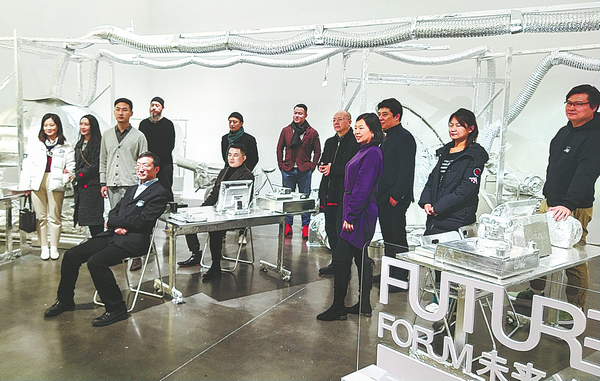

"Artists admire the creativity in human minds which is reflected in scientific wisdom," Gu says.
Pan Jianwei, a physicist who led the making of the world's first quantum satellite and China's drive to build quantum computers, infused his understanding about the perplexing quantum world into a pitch-black block resembling a server cabinet in his piece Schrodinger's Box.
The box, stacked up from tiny sponge cubes, can be split apart diagonally via a motor to reveal an indented caved-in fracture which hints at the moment of truth when matter collapses.
Xue Qikun, whose team observed the quantum anomalous Hall effect, a discovery that is expected to help accelerate the IT revolution, worked with his artistic collaborator to create a life-size replica of a science lab.
The tin-enveloped lab apparatus displayed is a reminder of China's intensified efforts over the past few years to build multiple huge science facilities, including large telescopes, neutrino probes, a dark matter underground lab and fusion energy experiment devices.
Wang Yifang, a high-energy physicist who led the building of several of China's science facilities, collaborated with an artist to create an oval hole out of aluminum floor tiles, symbolizing a black hole.
Another highlight of the exhibition is the brainchild of Zhou Qilin, a chemist specializing in catalysis. Artist Fan Bo, drawing inspiration after a conversation with Zhou, juxtaposed posters of brain anatomical notes with test tubes and petri dishes, displaying them on the front table.
"The artists should base their creations on science, through which we understand and perceive the modern world," says Wang Haoyi, a researcher of gene engineering with the Chinese Academy of Sciences. "And then art springs up spontaneously."
Wang blended human hair, which contains DNA information, to hundreds of cotton bags. The three-colored bags had been pieced together into a mosaic pattern depicting Morse code.
"When scientists meet artists, they both 'see' things in a new way," curator Gu says.